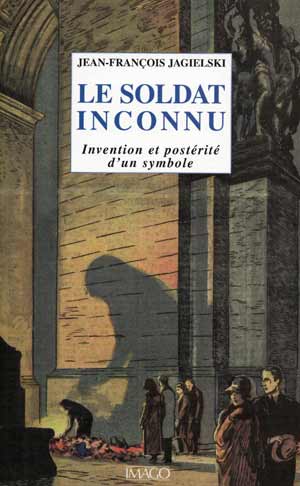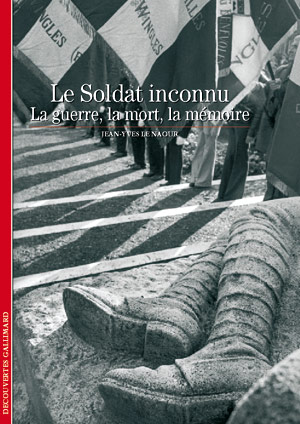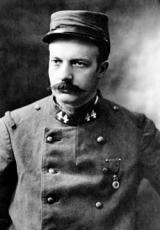Le Soldat Inconnu
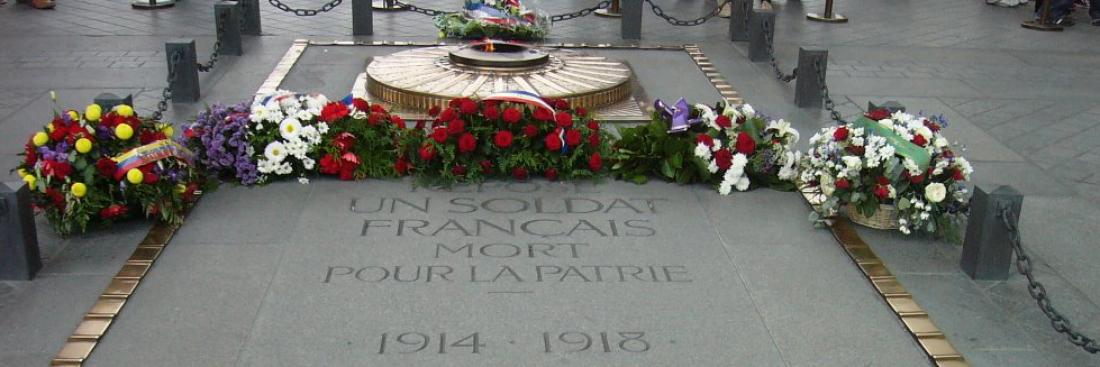
Corps 1
The Unknown Soldier
Corps 2
The idea of burying an unknown soldier at the Panthéon had already been raised in 1916 by the Chairman of the French Remembrance Society in Rennes, Mr. Simon. It had been taken up in 1918 by Mr. Maunoury, MP for the Eure-et-Loir département and by Mr. Crescitz, the Chairman of the French Society in Berne. The principle was accepted by the Chamber of Deputies in 1919. However, ex-servicemen, believing that a special dedicated place should be chosen, protested under the tough leadership of writer Binet-Valner, vice-chairman of the League of Section leaders, to ensure that the unknown soldier would be laid to rest under the Arc de Triomphe. On the 8th November 1920, President Georges Leygues secured the unanimous vote of MPs on the following law:
First Article: the honours of the Panthéon will be awarded to the remains of one of the unidentified soldiers who died on the field of honour during the 1914-1918 war. The transfer of the remains of this soldier will be formally undertaken on the 11th November 1920. Article 2: On the same day, the remains of the unknown soldier will be buried beneath the Arc de Triomphe". All that remained was to choose the mortal remains of the unknown man. The Minister of Arts, Mr. Honnorat, coordinated the whole process with constantly aware of the need for simplicity. From the eight regions of the front - Flanders, Artois, Somme, Ile-de-France, Chemin des Dames, Champagne, Verdun and Lorraine - where the bloodiest battles had taken place, the bodies of soldiers whose personal identities had been impossible to establish, but who were acknowledged to be soldiers serving in French uniform, were thus exhumed. On the 9th November, eight oak coffins containing the remains were brought to a chapel of rest set up in the citadel of Verdun. The coffins were rearranged several times inside this bunker in order to protect the anonymity and origin of each one.
On the 10th November, they were arranged in two columns of four in the No. 1 Listening Gallery in the lower citadel. For the occasion, the walls had been draped with white cloths and decorated with French flags set with laurels. The chapel of rest was lit with electric lamps veiled in mauve and candles set in cartridge cases. A company of the 132nd infantry, regiment impeccably dressed in brand new uniforms, their weapons at their feet, provided the guard of honour. At 3 pm, the Minister of Pensions, Mr. André Maginot, moved towards one of the young soldiers and held out a bouquet of red and white carnations to him to demonstrate how to make his selection. The man accorded this honour was Private Auguste Thin, the son of a soldier who had died during the war and a war orphan, who had enlisted voluntarily from the class of 1919. Visibly moved, the questions raced around his head: which one of the eight should he choose? Which one of them, about whom I know nothing, will represent the 1,500,000 dead?
According to his statements during an interview several years later, a recording of which is owned by the 132nd Land Army Dog Battalion in Suippes, he reasoned as follows: "The simple thought came to me: I belong to the 6th corps. In adding up all the numbers of my regiment, 132, it was also the number 6 that stuck in my mind. My decision was made: it would be the 6th coffin that I saw". Private Thin set off, accompanied by the Minister, Monsignor Ginisty, the Bishop of Verdun, Mr. Thoumyre, Commander Major Lespinasse, the mayor of Verdun, Mr. Rohin and the rest. Leaving to the right, the cortège made a tour of the room and then passed in front of the four coffins on the right, turned left, passed the 5th and stopped in front of the 6th. Auguste Thin laid down his bouquet and stood to attention: the Unknown Soldier had been chosen.
The casket was then loaded onto an artillery carrier to be taken to the railway station and then transported to Paris. The seven others left for the "Faubourg Pavé" necropolis on the outskirts of Verdun. Following a selection process guaranteeing total anonymity, made without any possibility of identification and with total impartiality, the Unknown Soldier who is laid to rest beneath the Arc de Triomphe remains a permanent and unique reminder of the recognition of a whole nation to what they owe to those who fought for their freedom. Copied by several countries, including Canada, Great Britain, Belgium, the United States and Australia, this symbol is eternal and universal. It brings to mind a poem of the Foreign Legion: "Who knows whether the unknown man who sleeps under the great Arch Is not a son of France, Not by the blood received but by the blood spilled". (Pascal Bonetti, 1920, Le volontaire étranger (the foreign volunteer)
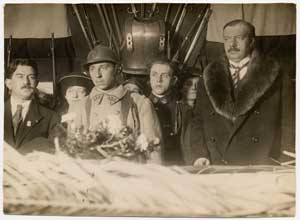
Le 10 novembre 1920, Verdun. Source : collection SHD
